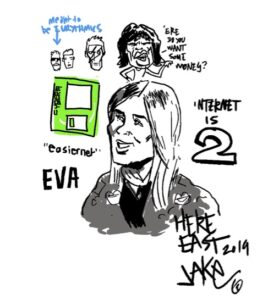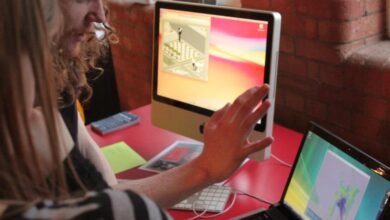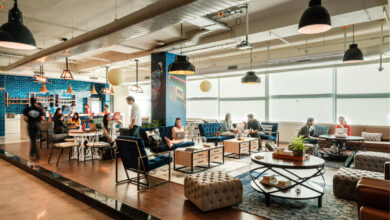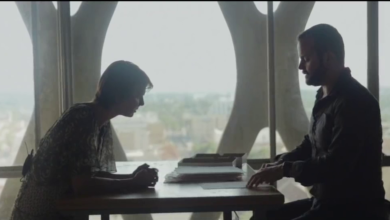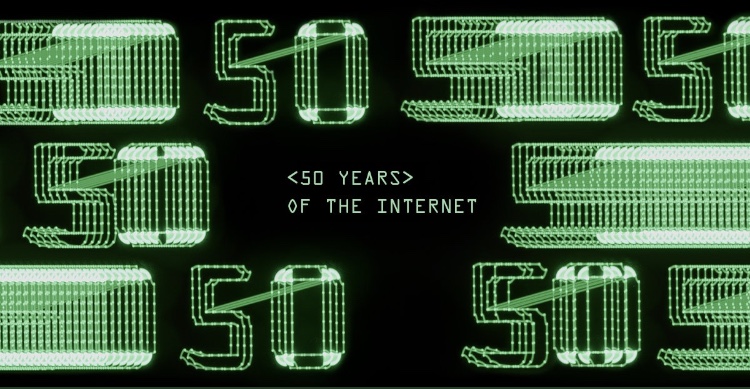
Back to The Future – Internet From 1969 to 2019
Celebrating 50 years of Internet, Here East organised three talks by Internet Pioneers Alan Kay, Peter Kirstein and Eva Pascoe – co-founder of Cyberia Café.
30th October 2019 at Here East
Image by @DigitalArcheology
Introduction
Trouble in cybersace and Internet discontent that we are experiencing today were be the subject of discussions at Internet At 50
Increasingly dystopian view of the Internet is prevailing amongst all age group as shown during @DigitalArcheology workshops pre-ceeding the anniversary evening.
But is the picture really so bleak or have we just fallen into the media Fake News trap? Since bad news is the only news we read, it is easy to arrive to the conclusion that the end is near and all cyberspace should be damned.
To insert some distance and take a more objective view of the cyber matters Digital Archeology team invited three Internet Pioneers to @HereEast in East London to share their stories of the original dreams, plans and implementations.
The idea of connecting people in remote locations is as old as hills. Ancient Greeks had sophisticated system of smoke signal language, based of number of short and long smoke emissions to signalise the number of attacking troops to alert locations as far away as 6 miles.
Creating telegraph and then telephone we managed do achieve basic remote communications in modern age, but at low bandwidth and at a high price. The need to improve on the telephone and to share text, calculations, images and audio files was what was driving the early Internet architects in US.
Alan Kay
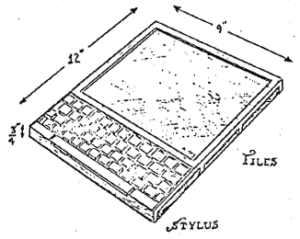
The first speaker, Alan Key was the inventor of Graphical User Interface and of a tablet computer.
He gave as an impressive gallop thru computing history from 1930 radar developments to late 60ties and beyond to birth of Internet at Arpanet in 1969.
It is a fascinating story of lies, deceptions and flukes, and that was just the scientists trying to schmooze a research grant from reluctant US government funding bodies.
Eventually, head of Arpa.
Charles Herzfeld gave the pioneers 1mln dollars ($6mln in today’s money) and the rest is history, the basic Internet connectivity architecture was born.
Considering that only last year US government extracted over 12 billion dollars of tax from Google, Apple and Facebook, it was the best return on tech investment ever, certainly beats all the Sillicon Valley VCs combined. Full story how this tiny funding was turned into one of the greatest invention on Earth is a must-read in the book Faster than Thought.
UK Internet was far behind US, not least due to interpersonal differences of opinion amongst the military chiefs on choices of where UK should connect to – Europe or US and which protocol to adopt.
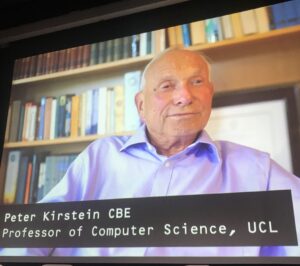
As time progressed, it was clear to scientific community that the only way was Arpanet. After some scientific high level skulduggery and academic mischief, Peter Kirstein in a clandestine project , originally funded privately , managed to connect UCL Internet Node to US ArpaNet in 1973.
Password to the Internet
To protect the first baby steps of the Internet, Peter had to fight to keep people from overusing the connection – as with kitchen cabinets, if you buy them, family will fill them with stuff they don’t really need. Same with connectivity, you connect two people, they just ‘have to’ use the connection even if it means sending cats photos to each other.
The early scientific community of users was no different. Given the connections, people came up with content to send thru what led to clogging up the Early Internet pipes.
Peter Kirstein decided it needs to stop and put a password on the network. Putting a password has stopped ‘unauthorised’ use, although it deeply irritated those who actually created the network but now found themselves unable to use it without Peter’s say so. Passwords were around from early 1960ties, but their use has expanded rapidly with growth of the Internet.
Password with Permission Levels
At first there was only one password for all, but over the following years Peter’s team created multi-user passwords that gave network users permission level access to different activities.
That was the beginning of cybersecurity as we know it. The problem was that Peter had a photographic memory and remembered the password without having to write them down on post it notes and leave for others to steal. He did not envisage that Johnny from Accounts Dept will have to remember 5 passwords to different online banking gateways and will leave it on post it notes around his PC.
Eva Pascoe
The third talk of the evening was by Eva Pascoe, who shared her story of the launch for world’s first Internet Café Cyberia in September 1994

Eva was studying for a PhD student at Birkbeck College, researching on computer interfaces, when she had the idea of opening a training centre for women in computing.
She explained how Mosaic browser has arrived on the Internet scene in late 1993, version 1.0 for Microsoft Windows included. Mosaic’s killer application was it’s ability to display images in line instead of separate window as it was done before web browsers.
Eva and her friends at Birkbeck College started creating websites using HTML, embedding sounds, music and images in them and noted the rapid growth of websites online.
Mosaic brought not just images but the ability to include sounds, video clips and easy navigation between pages with Home, Back and Next buttons. Even more useful was a History and Bookmarks buttons, which made the experience of moving around in cyberspace enjoyable, and accessible for newbies, not just engineers.
Graphical point and click interface made the Internet easy and fun. Mosaic was also a client for ftp and Gopher, the early Search Engine and finding information possible suddenly without having a PhD in information management and understanding of Boolean searches.
Arrival of Mosaic as well as growth of email use has prompted Eva and her co-founders to start Cyberia Cybercafe in London on Whitfield Street . The idea was to bring Internet to the High Street, inviting non-engineers, women artists, musicians to visit cyberspace from a non-geeky café location and together create new art movement.
As Eva noted, Peter Kirstein, Vint Cerf and Bob Khan created the infrastructure, but Eva wanted to find out what happens ‘when all those cables meet real people”.
Cyberia Café was privately funded, initially on a shoestring and with friends-and-family round as no banks in their right mind would have backed a café with computers in 1994. Coffee shops were almost unknown in London, with tea still the drink of choice for Londoners.
Eva hailed from Poland, a country with a coffee culture going back to 17th century so missed having her daily cappuccino and decided that it would be much more civilised to offer a trip to cyberspace with a good coffee and croissant.
Cyberia Café one of the first Lavazza machines in London, with only Bar Italia in Soho preceeding it on the High Street as Lavazza company has only landed in London in 1991.
Cyberia, equipped with second-hand Lavazza coffee machine and a team of helpers, called Cyberhosts has opened in September 1994 and from day one it became a world known Mecca for the Internet fans who queued three deep around the block every day just to browse the net using Mosaic, pick up email and use Gopher search or Archie.
At that time there was less than 100 Websites launched, one of the first ones was Cyberia Dating, called Recontrez, the first match-making online service, initially focusing on tech community. The second was Cyberia Job Centre, offering a job board for tech and graphic designers who were getting involved with Internet projects. Those two topics plus games sites and music fan sites, pretty much defined what Londoners wanted from the Internet, love,jobs and music!
High Brow Net
One of the most popular websites in Cyberia was quite high brow, the first Louvre Museum website, launched in September 1994. It had only a handful of images but it was a revelation for Cyberia visitors that you could see remotely the paintings from Paris collection, all at a click of a hypertext. Certainly a trip to London’s WhitField Street was much cheaper than a flight to Paris!
At that time a few hundred people in London had a home internet connection, but the prevailing Sportster modem speed was about 9.6 kbps. This was sufficient for basic text, but downloading games, music or video was excruciatingly painful at those speeds. Cyberia had 14.5. Kbps which made all the difference, a digital breakthrough only possible thanks to Sportster robotics releasing a faster modem in July 1994.
As Cyberia was a hub for Easynet, a pioneering London-based Internet provider, it was able to lead on speed for the next 4 years, always ahead of the home modem speeds and , tempting even the techie people out of their cosy homes into the High Street Cyberia Cafe, later SubCyberia and a gaming centre in the basement of the main café. As we know for gamers, speed is life and they zeroed on Subcyberia, bringing with them new ideas on how to use international connected spaces for global gaming.
Tech Team
Eva specialised in making Internet easy and translating tech lingo into friendly front ends, including cafes as interfaces to tech. Her partner, Gene Teare (now at Crunchbase.com) was a digital publishing specialist. Overall Cyberia’s technical team was led by David Rowe and Keith Teare later of Real Names fame, who co-founded Easynet, the first Internet Provider for non-technical users.
Later Graham Davies, has joined Easynet as Technical Director and adviser to technical rollout of Cyberia world-wide, which at that point, following a successful fundraising from Mike Jagger & Maurice Saatchi MegaloMedia fund, Cyberia Cafes were rolled out in Tokyo, Manilla, Bangkok and in Europe Paris and Rotterdam (with Virgin Megastore). The cafes were in Blade Runner-meet-Bauhaus, created by the architect of Cyberia’s Bernard Blauel, pioneer of early digital interactivity for the High Street world-wide.
Cyberia Café design
Some of the funds from Mick Jagger were used for commissioning Sebastian Conran to design new Cyberia floppy discs, courier bags and t-shirts with @ sign as Cyberia’s symbol.
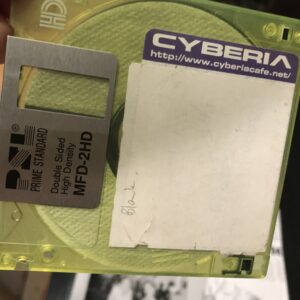
Girl Power
In London and all other cafes Cyberia has developed many women designers and programmers who migrated from digital publishing like Zoe Camper (now at IBM AI Watson in Las Vegas), Cath Le Couter , interactive story teller and film maker (Channel 4 Digital, Shooting People) , Hannah Gal, pioneer of Macromedia and Adobe Artist in Residence and many others. Gene Teare , Cyberia co-founder moved to Palo Alto and went on to innovate on start-up databases, now a lead research at Crunchbase.com in SF
Musicians embrace the Net
The café on Whitfield Street was a neighbour to Malcolm Mclaren, of Sex Pistols fame who lived next door on Scala Street who used to breakfast in Cyberia. He was fascinated by this new cyberworld. Next door was also Whitfield Street Studios, a world-class recording facility used by musicians like Kylie Minogue, U2 who used to come to Cyberia to learn about email, digital music downloads and how to build online forums for fans.
Kylie Minogue was particularly interested in the future of digital music, was a regular in Cyberia and gave an in-depth interview on the subject of ‘I would love to be a nerd’ to Cyberia Magazine.
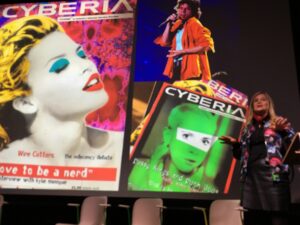
Often Cyberia was conducting live connections to BowieNet with online interviews by David Bowie, who was the pioneer of the idea that musicians provide samples for the fans to play with, rearrange and mix according to their creative taste.
Led by the interest in providing Digital Music distribution, Nick Ryan (NickRyanMusic.com) was the digital composer in Cyberia and collaborated with Keith Teare on Cyberia Records, the first efforts in embedding artists’ digital copy rights in the music code itself. This was prompted by the increasing concern of the artists who objected to Studios getting higher and higher share of musicians’ income.
At the same time the first Digital Payment, Cyberia Cash was being developed by Monsieur Thibault, a secretive digital payments and cryptography guru from France – later an active player in cryptocurrency developments.
The café quickly became a hub for musicians established like Gary Barlow but also up and coming techno and house DJs.
Cyberia then started providing ISDN lines to rave clubs like Megatripolis, Bagleys and Heaven, eventually supporting ravers in their fight against criminalisation of raves by John Major’s government in November 1994 supporting Zippies (Hippies with a Zip Drive) protest movement.
Governments started getting interested, with Al Gore funding W3C consortium and encouraging Web development in US, away from the original launch by Tim Berners Lee in CERN (Switzerland).
After the Internet access became more popular at home via Easynet ISP, Eva has co-developed and became CEO of a new, even easier Internet Provider aimed at women and fashion fans, called Zoom. The venture was co-funded by Topshop and Daily Mail, providing the first multi-brand fashion and lifestyle portal for UK audiences.
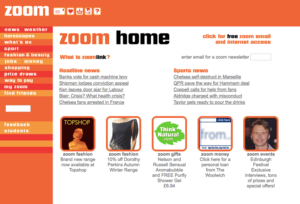
Zoom ISP came with a very colourful disc, illustrated by the top fashion illustrator from You Magazine and managed to attract over 50,000 subscribers in it’s first year.
Technical infrastructure was provided by Easynet on white label basis and it cost 10 pounds per month to connect to the Net – cost that was recovered by users via Topshop and Topman discounts on their online fashion, as by that time Eva has built world’s first High Street fashion website (build jointly with ICL Secure Shopping platform, co-authored by Tony Booth).
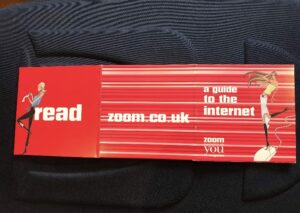
Topshop on line was also experimenting with the first mobile shopping web sites in 1999, using WAP technology.
Eva then famously argued with Alan Sugar on the pages of The Independent newspaper, against his claim that ‘nobody will want data on their mobile phones as we have Internet on our PCs in the office and at home’.
WAP was not the ultimate winner, but mobile smartphones were and the first mobile-friendly Topshop website was eventually re-launched in 2004.
What next? Eva as Internet Mayor for the Day
Eva finished her talk noting what she would do if she was Internet Mayor for the Day.
Her biggest objection is that the current hyper-centralisation of hosting of the Internet in the hands of Google Cloud, Amazon Web Services and Microsoft Azure and is creating a huge risk for overall resilience.
It was amply demonstrated in June 2019 when outage of Google Cloud took with it not just Shopify and hundreds of thousands of Websites but also YouTube, Netflix and thousands of mission critical applications. Further outage followed on 11th Nov, taking out Kubernetes and Nest.
The early Net was messy but robust. Internet today seems cleaner but has single point of failure and is easy to take out should a Chinese hacker had a spare afternoon on a rainy Sunday in Bejing. Tech giants are not optimal for the infrastructure and should be broken up and relaunched as smaller entities, to get back to Net diversity and proper resilience.
US has done that breaking up monopoly Bell Systems into Baby Bells in 1982, a solution that is pressingly needed today if Internet is to continue to grow in a technically and socially healthy way.
Secondly, Internet Data Centres today are run on coal, creating more CO2 output than our entire global airline industry. The users need to learn that, as the Cloud is not really the Cloud in the clean sky, but coal-fuelled environmental hell made of sweaty computers in overheated basements. Eva is now arguing for everyone to move to Nordic
Cloud, a new location for green and sustainable new generation of data centres, running on hydropower in North Sweden.
Thirdly, users must reclaim their data. Introduction of third party cookies in 1997 has started a downward spiral, taking away users basic digital rights to ownership of their private data. In response to third party cookies launch, Eva has co-founded Cybersalon.org in 1997 to lobby for Digital Bill of Rights and remind online audiences that Facebook should be paying us for bringing them content (yes, your photos of puppies) and creating billion dollar monster on the back of users’s own private data.
To finish on a good note, Eva noted that Open Source framework has been a remarkable success and a driver of constant innovation. Wikipedia and Wikidata have also been an unexpected victory of humans working together, in collaboration rather than in competition.
Eva finished off noting that Internet is 50, which is probably about 2 years old in human years, so it just means we need to get thru these Terrible Twos and provide guidance, support and clear rules to point the undoubtedly energetic toddler in the right direction.
